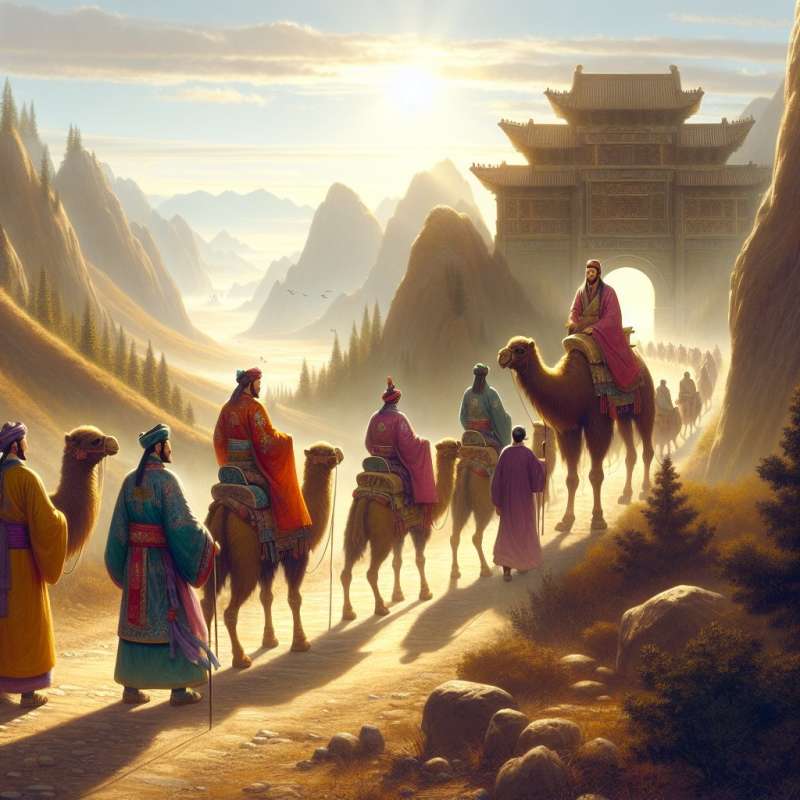
Silk Road Beginnings
Originating during the Han Dynasty (207 BCE-220 CE), the Silk Road wasn't a single route but an intricate trade network linking East to West, named for the lucrative silk trade.
Diverse Trade Goods
Beyond silk, myriad goods were traded: spices, gold, ivory, precious stones, glassware, and even horses. This exchange significantly impacted the economies and cultures of the connected regions.
Cultural and Religious Exchange
The Silk Road facilitated more than commerce; it was a conduit for cultural exchange. Ideas, art, science, and religions like Buddhism spread widely through these trade interactions.
Silk Road's Maritime Sister
Often overshadowed, the Maritime Silk Route complemented overland routes, enabling seafarers to trade across the Indian Ocean, reaching as far as East Africa and Southeast Asia.
Innovations in Travel
The Silk Road catalyzed innovations in navigation and transportation, like the development of caravanserais - roadside inns that supported the flow of commerce, information, and people.
The Black Death Travels
Unbeknownst to traders, the Silk Road was instrumental in the spread of the Black Death in the 14th century, illustrating the network's unintended consequences on global health.
End of an Era
The decline of the Silk Road began in the late 15th century, hastened by the Ottoman Empire's blockade and the rise of maritime trade routes pioneered by European explorers.Unexpected Trade Influence
The Silk Road's spice trade brought chili peppers to China, revolutionizing Chinese cuisine in the late 16th century.
When did the Silk Road originate?
During the Ming Dynasty
Han Dynasty (207 BCE-220 CE)
Before the Common Era
Company